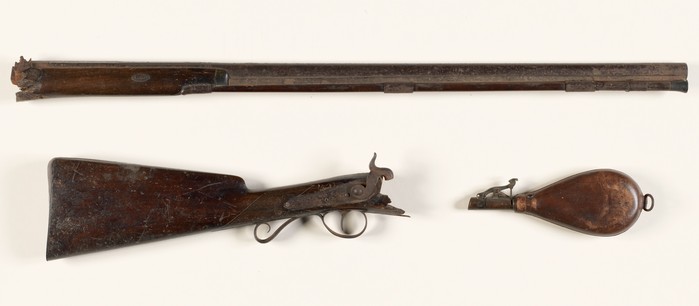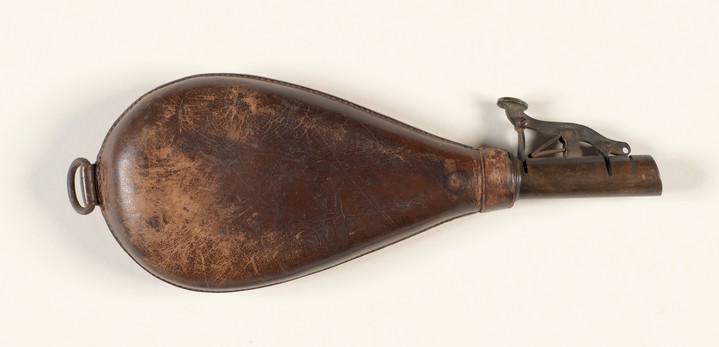
Smooth-bore muzzle-loading gun with metal barrel and ramrod and ammunition pouch
1802–13
R724 Items 1 & 3
Wood, steel and silver and gold inlays
and
1800s
R724 Item 2
Leather and metal (brass) containing lead shot
R724 Items 1 & 3
Wood, steel and silver and gold inlays
and
1800s
R724 Item 2
Leather and metal (brass) containing lead shot
This flintlock musket belonged to Gregory Blaxland, and was most likely used for hunting and protection, and would have been carried by one of the convicts assisting the explorers on their expedition across the Blue Mountains. The flintlock defined by a vertically placed sear or latch upon which the trigger acts, was the weapon of choice amongst hunters and soldiers during the 19th century, as they provided good accuracy and a long shooting range.
‘Lock, stock, and barrel’ (meaning ‘the whole thing’) refers to the three main parts of the gun: The stock is the wooden base; the barrel is the tube where the musket ball (or other ammunition) accelerates and exits the weapon; and the lock is the mechanism that causes the rifle to fire.
‘Muzzle loading’ guns are loaded through the ‘muzzle’ or front end of the barrel, and the ramrod is used to push the ball or bullet into the barrel. Under the barrel is the stock with a groove which allows the ramrod to slide into place and be stored.
It is likely that this weapon was converted from a flintlock to a percussion firearm to improve its safety and reliability in wet weather after the explorers’ journey in 1813.


 Back to list
Back to list